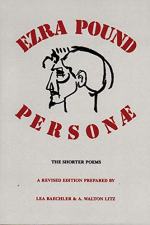|
This section contains 335 words (approx. 1 page at 400 words per page) |

|
In a Station of the Metro (Poem) Summary & Study Guide Description
In a Station of the Metro (Poem) Summary & Study Guide includes comprehensive information and analysis to help you understand the book. This study guide contains the following sections:
This detailed literature summary also contains Quotes and a Free Quiz on In a Station of the Metro (Poem) by Ezra Pound.
The following version of this poem was used to create this guide: Pound, Ezra. "In a Station of the Metro." Poetry Foundation Online. www.poetryfoundation.org/poetrymagazine/poems/12675/in-a-station-of-the-metro.
Note that parenthetical citations within the guide refer to the lines of the poem from which the quotations are taken.
"In a Station of the Metro" is a 2-line poem by Ezra Pound, an expatriate American poet and critic. It was originally published in the literary magazine Poetry in April 1913, reprinted in Pound's collection Lustra in 1917, and again in the 1926 anthology Personae: The Collected Poems of Ezra Pound. Though it lacks the traditional Haiku structure of 3 lines and 17 syllables, many consider it to be the first haiku published in English, including William J. Higginson, a poet and one of the charter members of the Haiku Society of America. Originally, Pound's poem was 32 lines long; by the end of his editing process, it was down to two lines, 14 words, and no verbs. This emphasis on the economy of language, the precision of imagery, and the power of words themselves makes Pound's poem one of the great examples of the Imagist poetic tradition. The elements of Imagism also helped launch the literary movement of Modernism.
The poem is a description of a moment in Concorde, an underground metro station in Paris, France. Pound, surrounded by these "faces in a crowd," experiences a moment of intense emotion and interpretation (1). In his mind, the faces are suddenly no longer faces, but "Petals on a wet, black bough" (2). The abrupt beginning and end of the poem underscore the drama of the moment, distilled from the ordinary flow of time and experienced as a singular, life-changing event. The thrust of the poem lies in its power to convey the precise moment when the people around Pound become not people, but petals; it communicates how things outside of us often transform into things inside of us. In this way, Pound shows how our inward interpretations shape our outward realities.
Read more from the Study Guide
|
This section contains 335 words (approx. 1 page at 400 words per page) |

|



